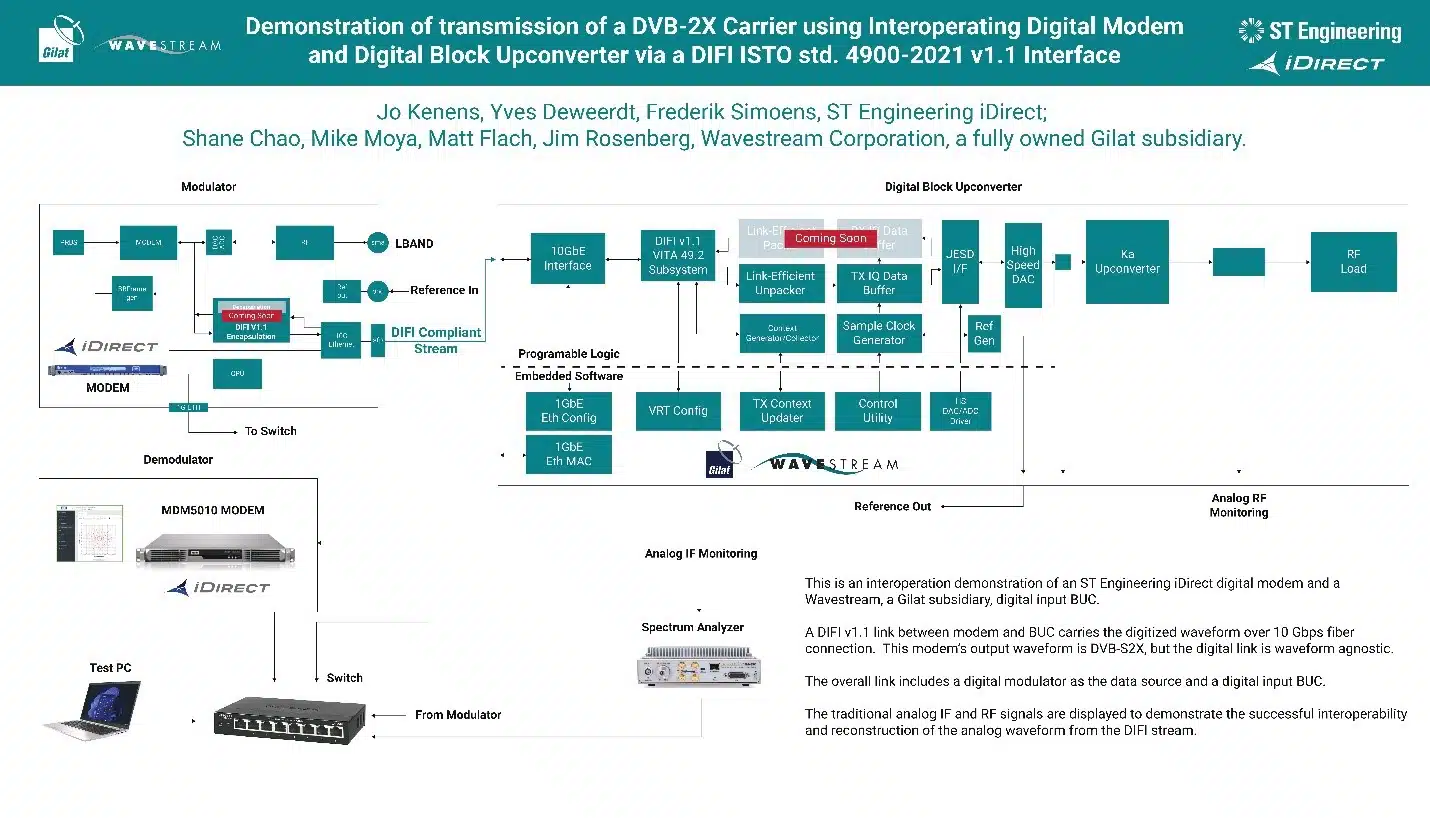The digital transformation of the teleport is a big deal. It’s a critical part of the evolution of the satellite industry. We recently undertook a Proof of Concept (PoC) demo in partnership with Wavestream, a Gilat Satellite Networks company, to demonstrate the conversion of analog signals to digital signals, using the Digital Intermediate Frequency Interoperability (DIFI) 1.1 Standard which has been developed by the DIFI consortium.
It can be quite a complex concept to wrap your arms around. So, we’d like to share some of the questions that we were asked during the demonstration that was held in Washington, at the Satellite 2023 event.
Why is there so much talk about the All-Digital Teleport?
The Digital Teleport is going to be integral to the development of the satellite industry and its integration into the wider connectivity landscape as it complements and works alongside terrestrial and cellular technologies. Signals from satellites today are traditionally connected to physical modems via analog cables that are not directly compatible with cloud-based networks. The analog signals that are used to connect modems, datacenters and teleports and terminals are complex and prone to error when it comes to digital signal processing. Our increasing migration to the cloud means that future satellite connectivity must be established from a cloud environment through the digital interface directly to antennas.
The ability to convert hardware into software that is installed and managed remotely via third-party datacenters will give satellite operators more flexibility over their networks and speed up how quickly they can respond to customer demands. Modems are a critical part of the ground segment. They are used in teleports and at customer sites to translate the satellite signals an antenna receives and convert 8 them for transmission through other networks.
By virtualizing the gateway, baseband and modems that are usually located in the teleport, their functionality can be run on private or public cloud platforms.
Why is interoperability important?
Interoperability is the foundation for the digital transformation of the space industry. By providing interoperability at the IF/RF layer, manufacturers can build technologies that will work together in both open and closed network topologies. This will result in highly flexible networks and will mean that the industry can respond rapidly to customer needs.
The entire ecosystem needs to be on board to make the virtualization of the ground segment a success. Different industry segments must work together to implement the standard: cloud providers, satellite ground platform manufacturers, teleport operators, antenna manufacturers and ground segment ODU manufacturers.
If we only cloudify the modem side, then the antennas or amplifiers won’t be able to speak the digital language, and this will mean that we cannot create a fully digital teleport. The satcoms industry must continue to work to standardize interfaces and increase their adoption to support interoperability.
What’s the purpose of the demonstration?
This PoC showcases that an iDirect modulator can output a digitized signal that conforms to the DIFI standard and is interoperable with a BUC from Wavestream.
This PoC implementation of the DIFI standard is an important milestone on our path to virtualization and the realization of the all-digital teleport. Products with DIFI-compliant interfaces will simplify gateway designs and pave the way for a more flexible and virtualized ground infrastructure.
What does the demonstration set-up look like?

What else must happen to ensure interoperability?
DIFI is an important part of the interoperability challenge when it comes to virtualizing modem technology. However, there are many other aspects to interoperability. The integration of satellite networks with terrestrial networks, for instance, requires interoperability at the management and orchestration layer. Here, standardization work is being done within 3GPP-NTN. Another area is space and ground convergence, which requires tighter interaction between the satellite and ground assets. Again, standardization on how these different components should interface is currently being examined.
Stay tuned to the blog for more on standardization in the coming weeks!
Want more information on ground segment transformation? Visit our New Ground content hub.
Watch the Demo video and read the press release.
